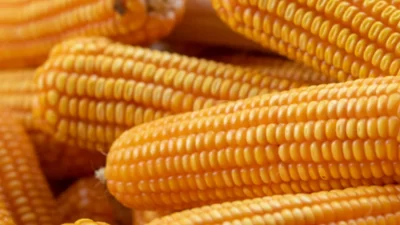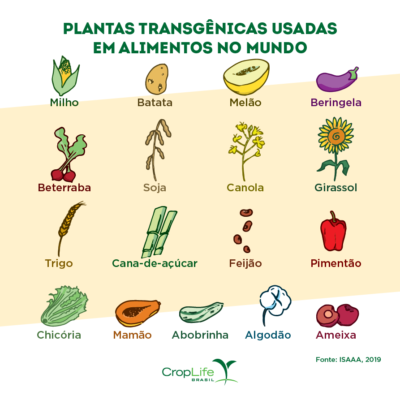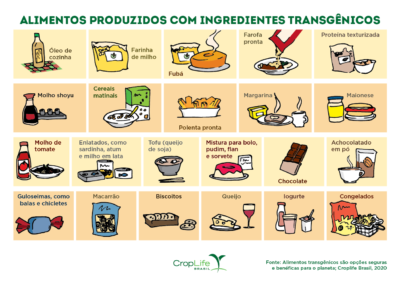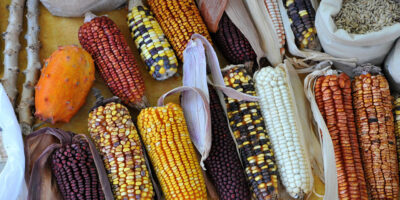GMO is the English acronym for genetically modified organisms, that is, the famous transgenic foods.
Many people are still afraid of consuming genetically modified products, but despite this, Brazil is the 2nd largest producer of transgenics in the world, behind only to the USA. Currently, 76% of soy, 56% of corn and 27% of cotton produced in Brazil are genetically modified.

Corn is one of the most consumed transgenic foods in the world./ Image by: Syngenta
That is, it is something totally present in our daily lives. Therefore, in this article we will explain what GMO’s are and whether or not they are safe and beneficial options for the planet.
This is the third in this series of texts. We’ve already talked about molecular agriculture and CRISPR. The next ones are about precision fermentation and lab-grown foods. So if you missed any, click on the links. And continue here so you don’t miss the next ones, okay?
GMO food: What does it mean?
Simply put, GMO products are those products that have had their DNA modified by the insertion of one or more genes from another organism.
This process can be applied to plants, animals, microorganisms or any other organism whose genetics have been modified in the laboratory.
To create a genetically modified food, scientists select a gene that contains the traits of interest from one species and transfer it to another. For example, let’s say that a certain plant has greater resistance to periods of drought than soybeans. This gene that determines this resistance can be applied to soybean so that it also has this characteristic.
From the lab to the supermarket
The truth is that several products we consume today are geneticallymodified and are already on the shelves of the supermarkets.

Image by: CropLife
It is very likely that the popcorn we consume at the movies, for example, comes from corn that has been modified in the laboratory to become more tolerant to herbicides and more resistant to insects.
Or even our rice and beans. Several types of rice are being tested, mainly in China, in search of a pest-resistant crop.
And, in 2011, Embrapa (Brazilian Company for Research and Agriculture) obtained approval for the commercial cultivation of a variety of genetically modified beans resistant to the golden mosaic virus, one of the biggest enemies of bean plants. Thus, we realize that it is a breakthrough that we cannot escape.
Is the concern about genetically modified foods necessary?
Institutions such as the World Health Organization and the Food and Agriculture Organization of the United Nations agree that transgenics are safe and that genetic manipulation technology (when performed under the correct regulations and protocols) does not pose risks.

Genetically modified salmon is the first animal of its kind to be released for consumption./Image by: BBC Brasil
There are researchers who claim that genetically modified foods can present potential risks in the long term and indicate the need for further studies. In addition, something both sides agree on is the need for food labels to bring information that they are transgenic, so consumers can make informed decisions about what they want or not to consume.
GMO: pros and cons
Here are some pros of GMOs:
- Longer food shelf life = less waste.
- Greater plant resistance to viruses and climate stress = greater food security.
- Increased nutritional value.
- Increased insect resistance, which allows farmers to reduce pesticide use.
And now some cons:
- Long-term effects are still unknown.
- There is a risk of GM foods causing allergic reactions. For example, if scientists combine a gene from a peanut with a soy, there are chances that a person with a peanut allergy could have an allergic reaction when consuming the modified soy.
- Some transgenics are modified to be more resistant to certain antibiotics. In theory, genes from these plants could get into humans or animals when they eat them. As a result, the person or animal can also develop antibiotic resistance. The likelihood of this happening is very small, but the WHO and other health authorities have guidelines to avoid it.
They will continue to be among us

Image by: CropLife
The truth is that around 25 years ago the world began to cultivate genetically modified plants due to their productive potential. In 1996, only 1.7 million hectares were used for the cultivation of transgenic foods. In 2018, that number reached 191.7 million hectares.
Genetically modified foods are already sold in at least 70 countries around the world. Finally, we can say that the trend is for these numbers to continue to grow more and more.
The Countercurrent: The Growth of Creole Foods

Creole corn./Image by: Cecilia Bastos Ribeiro
While the GMOS move towards even greater standardization in food, creole foods are the opposite of this. Preaching the consumption of fruits, vegetables and vegetables exactly as nature creates them.
Other names besides creole are: seeds of passion or seeds of solidarity. And these adjectives are linked to the process of growing these seeds. This is because they are varieties developed, adapted or produced far from laboratories, in nature, by family farmers or peasants, land reform settlers, quilombolas and indigenous people.
And why are they the opposite of GMO? Because they were naturally selected over decades, passed down from generation to generation and are still preserved without genetic changes and with a high variety of species. This prevents extinction against pests, for example.
That is, it makes food more resilient. We’ve talked a little bit about this topic here, if you’re curious.
Finally, GMO was another theme in our series about these technologies of the future in our food. Keep following the next articles that are yet to be published!
Sources: CropLifeBrasil, Simple Pharma, Syngenta, BBC, Medical News Today, Kemim



COMMENTS